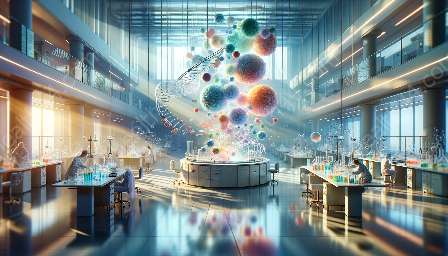Lipids represent a diverse and essential category of biomolecules that play critical roles in biochemistry, health education, and medical training. This comprehensive topic cluster delves into the intricacies of lipids, covering their structure, functions, and significance in health and disease.
The Basics of Lipids
Defining Lipids: Lipids are a broad group of naturally occurring molecules that include fats, waxes, sterols, and various other related compounds. They are characterized by their insolubility in water and solubility in nonpolar solvents such as ether and chloroform.
Classifying Lipids: Lipids are commonly classified into several major groups, including fatty acids, triglycerides, phospholipids, sterols, and sphingolipids. Each of these subgroups has distinct chemical structures and biological functions.
Lipid Metabolism
Overview of Metabolism: Lipid metabolism encompasses the processes involved in the synthesis, storage, utilization, and catabolism of lipids within living organisms. It is a dynamic and tightly regulated system that maintains lipid homeostasis.
Lipid Synthesis: The synthesis of lipids occurs through complex biochemical pathways, such as fatty acid synthesis, cholesterol biosynthesis, and the assembly of complex lipids like triglycerides and phospholipids.
Lipid Catabolism: During catabolism, lipids are broken down to release energy and produce metabolic intermediates. The breakdown of triglycerides through lipolysis and the oxidation of fatty acids are crucial processes in lipid catabolism.
Lipid Structure and Functions
Structural Diversity: Lipids exhibit remarkable structural diversity, ranging from simple hydrophobic hydrocarbons to complex amphipathic molecules with distinct head and tail regions. This structural versatility underlies their multifaceted functions.
Energy Storage: Triglycerides serve as the primary form of energy storage in organisms, providing a dense source of metabolic fuel for cellular activities and sustaining prolonged periods of energy expenditure.
Cellular Membranes: Phospholipids and sterols are key components of cellular membranes, contributing to membrane fluidity, permeability, and the organization of membrane-bound proteins.
Signaling Molecules: Several lipid-derived molecules, including eicosanoids and sphingolipid-derived signaling molecules, act as important mediators of intercellular communication and intracellular signaling pathways.
Lipids in Health and Disease
Role in Human Health: Lipids are essential for various physiological processes, including hormone production, the absorption of fat-soluble vitamins, and the maintenance of skin and hair health.
Associations with Disease: Imbalances in lipid metabolism can lead to health issues, such as dyslipidemia, atherosclerosis, obesity, and metabolic disorders like diabetes. Understanding lipid metabolism is crucial for preventing and managing these conditions.
Implications for Medical Training
Medical Relevance: Medical professionals must have a deep understanding of lipid biochemistry and metabolism to effectively diagnose and manage lipid-related disorders, prescribe lipid-lowering medications, and provide dietary and lifestyle recommendations.
Health Education: Health educators play a vital role in promoting lipid awareness, advocating healthy lipid profiles, and imparting knowledge about the role of lipids in overall health and well-being.
In Conclusion
Exploring Lipids: The realm of lipids is captivating and multifaceted, intertwining with biochemistry, health education, and medical training. The intricate interplay between lipid structure, metabolism, and functions underscores their significance in the molecular fabric of life and health.


